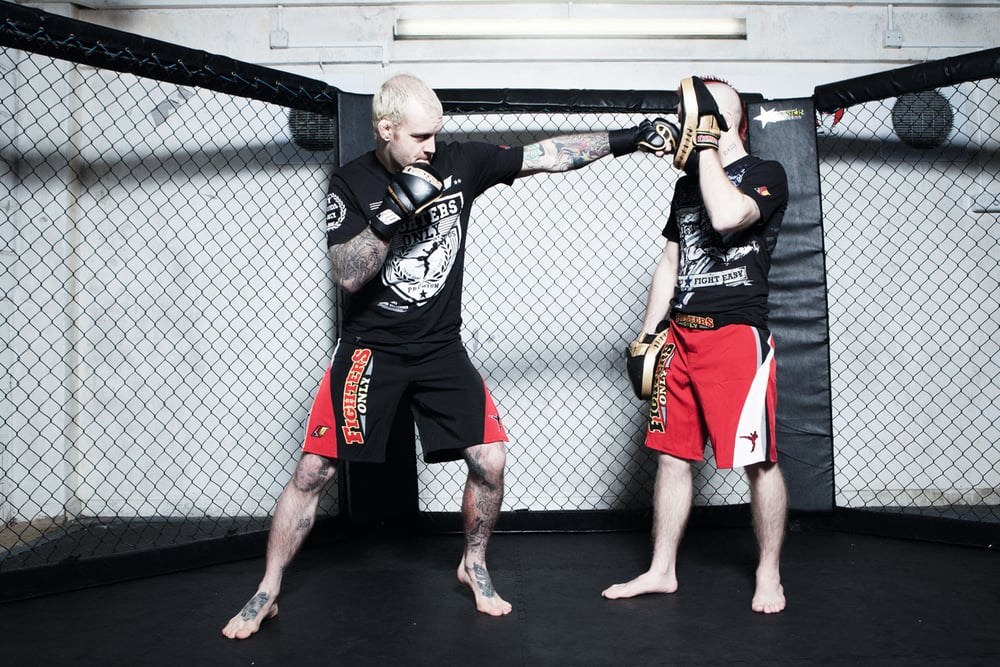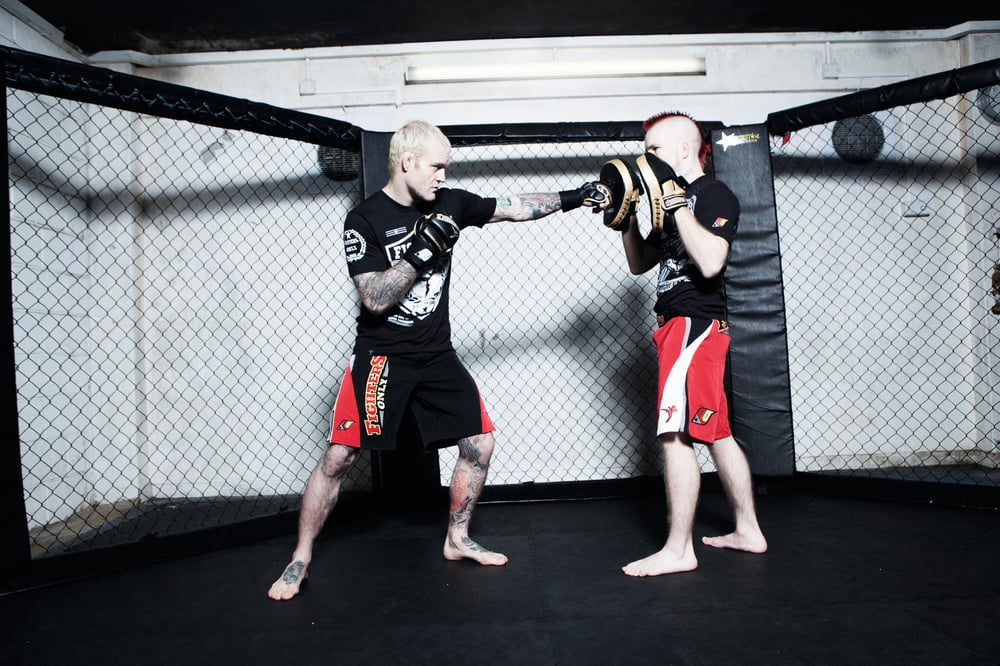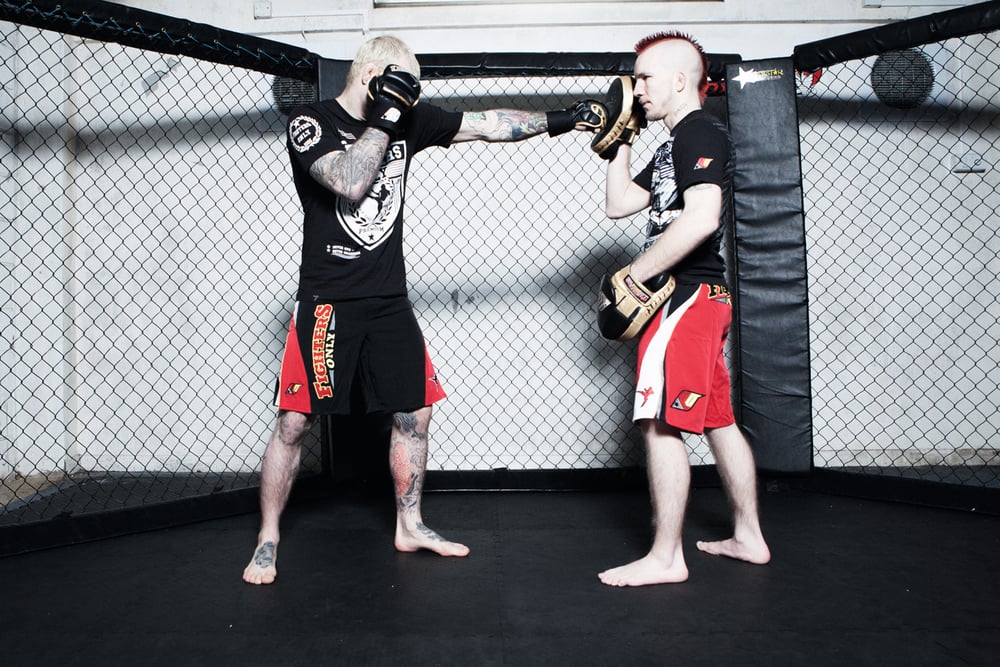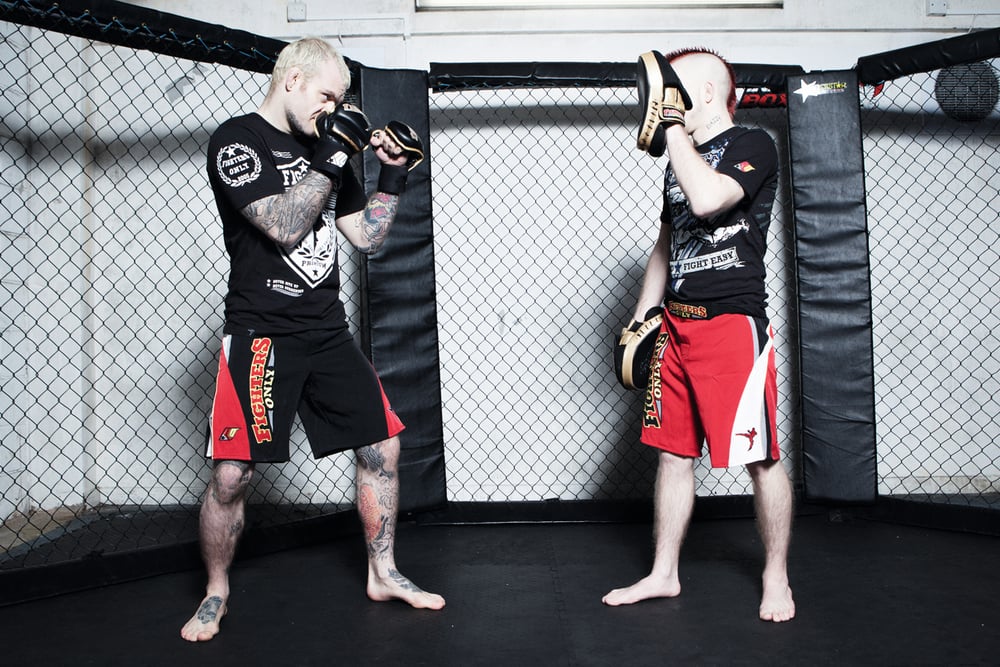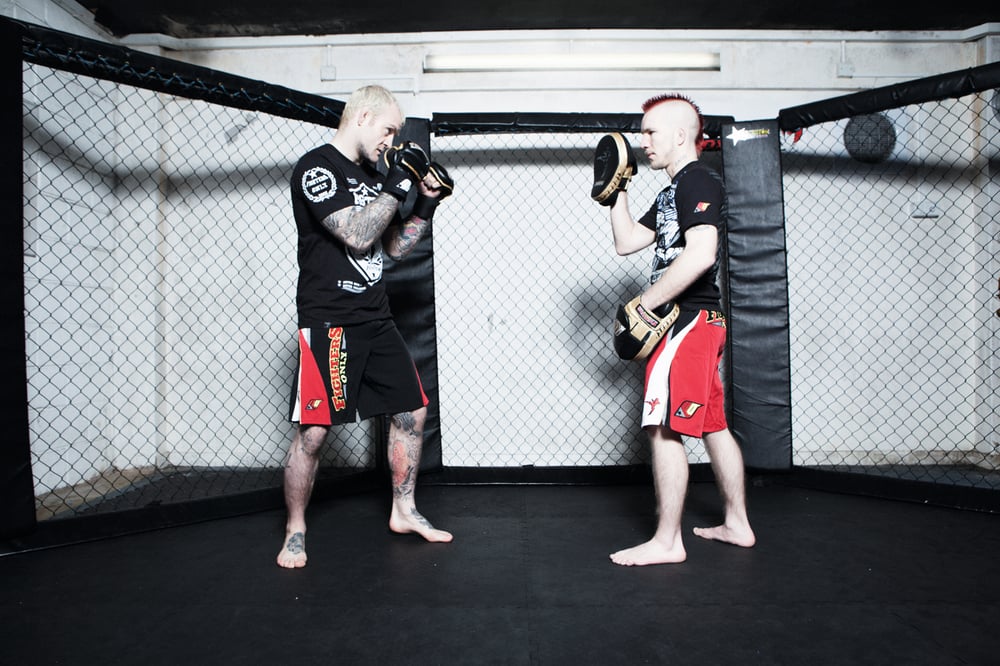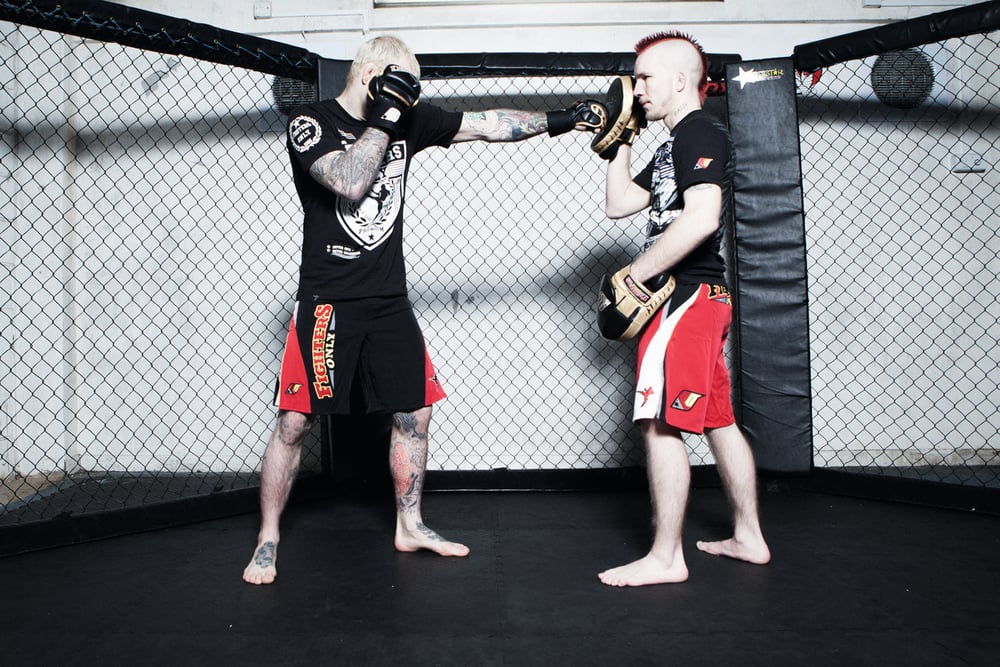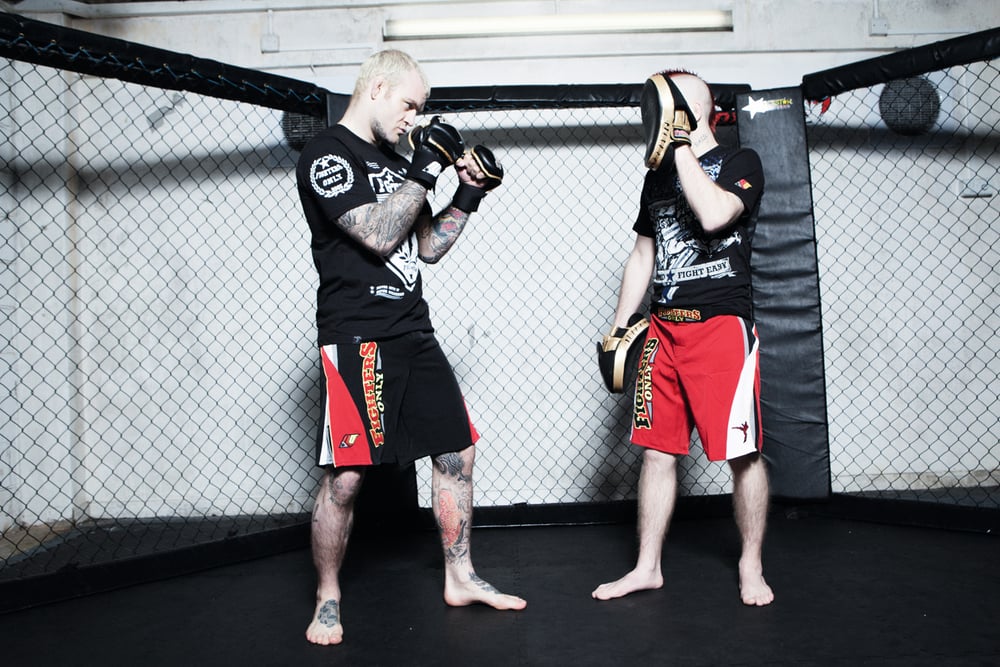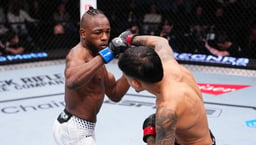
Issue 102
June 2013
Master one of MMA’s most under-utilised yet most important strikes
Pete Irving
Pete Irving is a professional welterweight fighter and Fighters Only’s resident fight expert.
Perhaps the most versatile tool in the striker’s arsenal, the jab can be used in a huge variety of ways. It can be used defensively, keeping an opponent at bay and enforcing your preferred range. Or utilised offensively to prepare attacks with other weapons, by pawing or picking to distract or establish the range before committing to a right hand or a big hook. The jab can also be used simply to hurt your opponent, smashing into the stomach, solar plexus, chin or nose.
Although knockout punches from the jab are rare, it is certainly not impossible to punch your weight and cause real damage.
JABBING FROM THE HIP
With the lead hand low, this type of jab can be difficult to see coming, and helps the employer of this style reserve their energy, being less demanding than holding the hands up.
The disadvantage is, of course, the lack of defense offered by the lead arm. Hiding the jaw behind the shoulder can help to evade punches, but affords little protection against a kick. When using this style, constant changes of angle and distance as well as good reactive head movement are required.
DRILL: MOVEMENT, DISTANCE AND TIMING
Hanging the lead hand low by your hip, wait for the pad man to show the jab and whip the punch out as soon as the pad appears. Your pad man should throw a punch back at you, slip back, without moving your feet, and return the punch instantly as you recover your posture.
EXAMPLE: RASHAD EVANS VS ROGERIO NOGUEIRA, UFC 156, 2013
Former UFC light heavyweight champion Rashad Evans often uses his jab like this, hanging his lead hand low and snapping the punch up to his opponent’s face.
LONG JAB
With a classic boxing long jab, the default hand position varies greatly from fighter to fighter. Some fighters prefer to hold both hands high on the temples, ready to block and soak up the opponent’s strikes. Others hold their hand lower by the jaw, or lead hand slightly forward with the rear hand covering jaw or temple. This affords the MMA fighter a line of defense for the shot and the ability to maintain some distance from an opponent who would tie them up. With the classic long jab the hand rotates as the punch is thrown, from vertical to horizontal, ending with the complete extension of the arm. MMA fighters must be aware that such a punch gives away all their lines of defense if the opponent shoots as the punch is thrown. '
DRILL: DEFENSIVE HAND POSITION
As you punch, your pad man will return by ‘slapping’ you with the pad at the angle of attack from the left hook, testing that the rear hand ‘stays home.’ The most common defect when jabbing is to simultaneously drop the right hand.
EXAMPLE: GEORGES ST PIERRE VS NICK DIAZ, UFC 158, 2013
Take a look at how GSP holds his lead hand, or top MMA striker Paul Daley, for good examples of this style of hand position. St Pierre was especially cognizant of this against the tricky stand-up of Nick Diaz recently at UFC 158.
PISTON PUNCH
A shorter, snappier straight left thrown with the elbow down is a lesser commitment, and can potentially generate more power by hitting with a connection from the elbow and the hip, driving the weight of the whole body through the punch.
DRILL: JAB VERSUS TAKEDOWNS
As soon as you jab, your pad man will shoot in and attempt to grab a single or double. Short sprawl, pressing your hip onto your opponent, and jam the collar, slamming the forearm against your opponent’s neck. This block will allow you to sidestep the shot, and deliver a knee, uppercut or guide the opponent into a front headlock.
EXAMPLE: GLOVER TEIXEIRA VS ‘RAMPAGE’ JACKSON, UFC ON FOX 6, 2013
UFC light heavyweight contender Glover Teixeira’s left hands are a good example of this style. His jabs against ‘Rampage’ Jackson in January lent themselves well to his preferred power puncher style.
...


